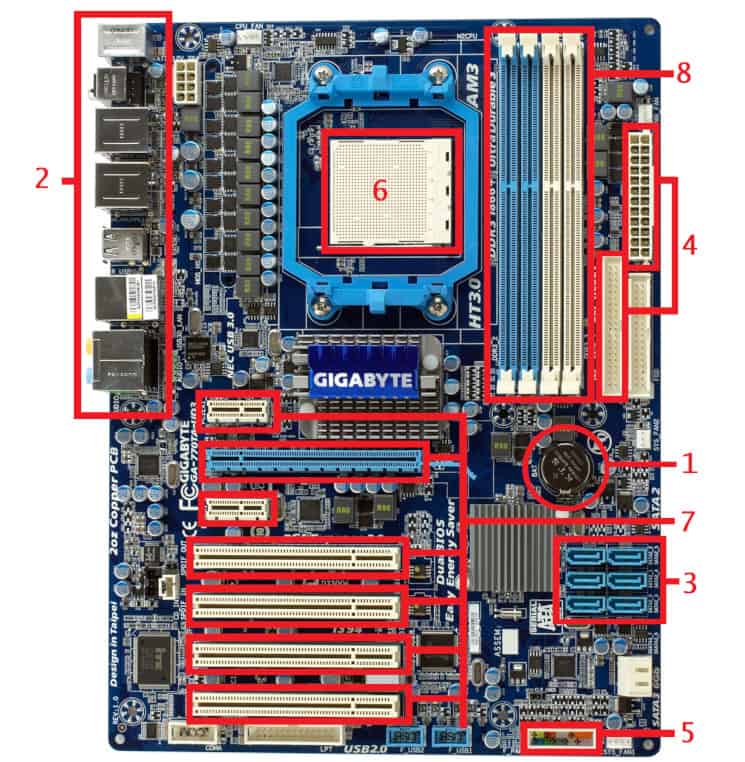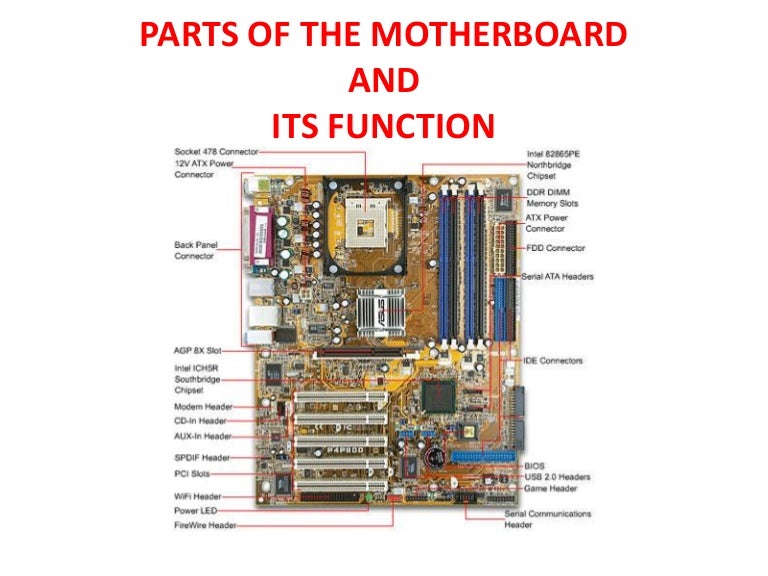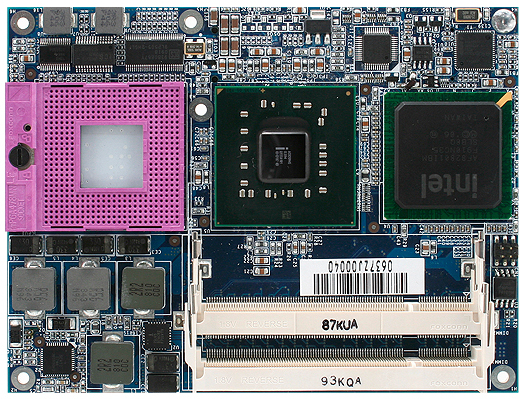Memory Slot Definition And Function
- Memory Slot Definition And Function Input
- Memory Slot Definition And Function Examples
- Memory Slot Definition And Function Definition
- Memory Slot Definition And Functions
In the design of the computer system, a processor, as well as a large amount of memory devices, has been used. However, the main problem is, these parts are expensive. So the memory organization of the system can be done by memory hierarchy. It has several levels of memory with different performance rates. But all these can supply an exact purpose, such that the access time can be reduced. The memory hierarchy was developed depending upon the behavior of the program. This article discusses an overview of the memory hierarchy in computer architecture.
What is Memory Hierarchy?
With equal amounts of memory in both slots, memory can be interleaved so that successive chunks of memory alternate slots. That way, memory access gets distributed to both slots almost perfectly evenly, allowing their bandwidth to combine. With uneven amounts, memory cannot be interleaved and has to be mapped first to one stick and then the other. (, 06:54 AM) Garteal Wrote: Do you have save games on your memory card? You can check them memory cards with the memcard manager in Dolphin to verify. Otherwise either delete or rename the memory card(s) in My Documents/Dolphin Emulator/GC and try again.
The memory in a computer can be divided into five hierarchies based on the speed as well as use. The processor can move from one level to another based on its requirements. The five hierarchies in the memory are registers, cache, main memory, magnetic discs, and magnetic tapes. The first three hierarchies are volatile memories which mean when there is no power, and then automatically they lose their stored data. Whereas the last two hierarchies are not volatile which means they store the data permanently.
Well DDR SDRAM has only one notch (slightly more to one side) and it differs from DDR2 RAM because it is a wider notch and they are not in the same spot. What this means is that the memory slots in the motherboard must have one notch so that the DDR RAM can fit into it. The picture below demonstrates that. A secure digital card (SD card) is a small flash memory device designed to provide high-capacity memory in a portable size. A standard SD card measures 32mm x 24mm x 2.1mm and weighs approximately 2 grams, whereas miniSD and microSD cards are physically much smaller but contain a similar capacity of.


A memory element is the set of storage devices which stores the binary data in the type of bits. In general, the storage of memory can be classified into two categories such as volatile as well as non- volatile.
Memory Hierarchy in Computer Architecture
Memory Slot Definition And Function Input
The memory hierarchy design in a computer system mainly includes different storage devices. Most of the computers were inbuilt with extra storage to run more powerfully beyond the main memory capacity. The following memory hierarchy diagram is a hierarchical pyramid for computer memory. The designing of the memory hierarchy is divided into two types such as primary (Internal) memory and secondary (External) memory.
Primary Memory
The primary memory is also known as internal memory, and this is accessible by the processor straightly. This memory includes main, cache, as well as CPU registers.
Memory Slot Definition And Function Examples
Secondary Memory
The secondary memory is also known as external memory, and this is accessible by the processor through an input/output module. This memory includes an optical disk, magnetic disk, and magnetic tape.
Characteristics of Memory Hierarchy
The memory hierarchy characteristics mainly include the following.
Performance
Previously, the designing of a computer system was done without memory hierarchy, and the speed gap among the main memory as well as the CPU registers enhances because of the huge disparity in access time, which will cause the lower performance of the system. So, the enhancement was mandatory. The enhancement of this was designed in the memory hierarchy model due to the system’s performance increase.
Ability
The ability of the memory hierarchy is the total amount of data the memory can store. Because whenever we shift from top to bottom inside the memory hierarchy, then the capacity will increase.
Access Time
The access time in the memory hierarchy is the interval of the time among the data availability as well as request to read or write. Because whenever we shift from top to bottom inside the memory hierarchy, then the access time will increase
Cost per bit
When we shift from bottom to top inside the memory hierarchy, then the cost for each bit will increase which means an internal Memory is expensive compared with external memory.
Memory Hierarchy Design
The memory hierarchy in computers mainly includes the following.
Registers
Usually, the register is a static RAM or SRAM in the processor of the computer which is used for holding the data word which is typically 64 or 128 bits. The program counter register is the most important as well as found in all the processors. Most of the processors use a status word register as well as an accumulator. A status word register is used for decision making, and the accumulator is used to store the data like mathematical operation. Usually, computers like complex instruction set computers have so many registers for accepting main memory, and RISC- reduced instruction set computers have more registers.
Cache Memory
Cache memory can also be found in the processor, however rarely it may be another IC (integrated circuit) which is separated into levels. The cache holds the chunk of data which are frequently used from main memory. When the processor has a single core then it will have two (or) more cache levels rarely. Present multi-core processors will be having three, 2-levels for each one core, and one level is shared.
Main Memory
The main memory in the computer is nothing but, the memory unit in the CPU that communicates directly. It is the main storage unit of the computer. This memory is fast as well as large memory used for storing the data throughout the operations of the computer. This memory is made up of RAM as well as ROM.
Magnetic Disks
The magnetic disks in the computer are circular plates fabricated of plastic otherwise metal by magnetized material. Frequently, two faces of the disk are utilized as well as many disks may be stacked on one spindle by read or write heads obtainable on every plane. All the disks in computer turn jointly at high speed. The tracks in the computer are nothing but bits which are stored within the magnetized plane in spots next to concentric circles. These are usually separated into sections which are named as sectors.
Magnetic Tape
This tape is a normal magnetic recording which is designed with a slender magnetizable covering on an extended, plastic film of the thin strip. This is mainly used to back up huge data. Whenever the computer requires to access a strip, first it will mount to access the data. Once the data is allowed, then it will be unmounted. The access time of memory will be slower within magnetic strip as well as it will take a few minutes for accessing a strip.
Advantages of Memory Hierarchy
Memory Slot Definition And Function Definition
The need for a memory hierarchy includes the following.
- Memory distributing is simple and economical
- Removes external destruction
- Data can be spread all over
- Permits demand paging & pre-paging
- Swapping will be more proficient

Thus, this is all about memory hierarchy. From the above information, finally, we can conclude that it is mainly used to decrease the bit cost, access frequency, and to increase the capacity, access time. So it is up to the designer how much they need these characteristics for satisfying the necessities of their consumers. Here is a question for you, memory hierarchy in OS?
Memory Slot Definition And Functions
A memory slot, memory socket, or RAM slot allows RAM (computer memory) to be inserted into the computer. Most motherboards have two to four memory slots, which determine the type of RAM used with the computer. The most common RAM types are SDRAM and DDR for desktop computers and SODIMM for laptop computers, each having various types and speeds. The picture below is an example of what memory slots may look like inside a desktop computer. In this picture, there are three open and available slots for three memory sticks.
When buying a new computer or motherboard, pay close attention to the types of RAM the memory slots can accept. Make sure you know exactly the type of RAM to buy for your computer. It is also important to note how many available memory slots are available in your computer. It is not uncommon for computers to have all memory slots occupied. If all slots are full and you want to upgrade the computer memory, you need to remove some or all of the existing memory.
Why are the memory slots different colors?
When a motherboard has different colored memory slots, it indicates the memory slots are dual-channel, and pairs of memory should be installed on the same channel (color). For example, a motherboard could have two yellow and two black memory slots. The yellow memory slots could indicate Channel A and Channel B could be indicated by the black slots. If you were only installing two memory sticks, you'd want to install both of them in Channel A (yellow slots) for optimal performance.
Related pages

Memory module, Memory terms